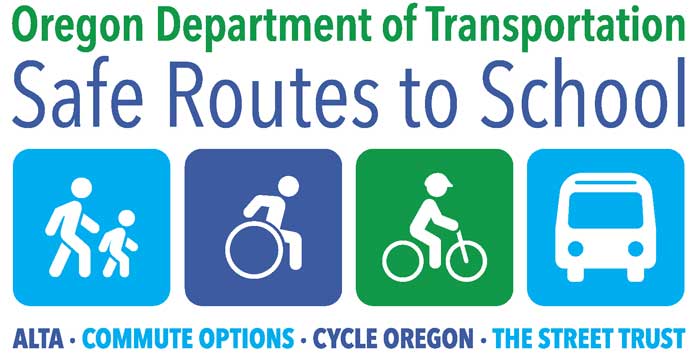Why Oregon Safe Routes to School
Healthier Families
Only one generation ago, children routinely walked and rolled to school. Today, fewer children walk or roll and guardians are driving more. The US Department of Health and Human Services recommends that children and adolescents get at minimum, one hour of physical activity each day. Safe Routes to Schools projects encourage walking, biking, and rolling, which can incorporate the activity children need into their everyday lives.
Less Traffic Congestion
Reducing the number of private vehicles commuting to school can reduce morning traffic around the school. Less traffic congestion also improves conditions for pedestrians and bicyclists, and creates a positive cycle—as the community sees more people walking and rolling, more people feel comfortable walking and rolling.
Stronger Sense of Community
The common goal of improving conditions for walking and bicycling brings families, neighbors, school officials, and community leaders together. The sense of community also builds as children and parents develop walking and bicycling buddies and chat with neighbors on the sidewalk or path.
Safer Streets
Communities with higher rates of walking and rolling tend to have lower crash rates for all travel modes. One reason may be that motorists drive more cautiously when they expect to encounter walkers and bicyclists. More walkers and bicyclists can also improve personal security by providing more “eyes on the street.”
Creating Better Commuters
Safe Routes to School programs encourage students to learn safe travel behaviors through educational materials and activities. Learning these behaviors at a young age can lead to long-term confidence in active transportation commuting options. Adults and entire communities also learn and benefit from these educational opportunities, allowing them a chance to further improve their safe travel skills.
Lower Costs
Encouraging and enabling bicycle and pedestrian trips reduces costs for the family, community, and school district. Families save on gas, communities spend less on building and maintaining roads, and school districts spend less on busing. In fact, one school district calculated $237,000 in annual savings.
Improved Accessibility
Improving accessibility for students of all abilities to walk, bike and roll to school makes it easier for everyone in the community to get around, including parents with strollers, senior citizens, residents without cars, and residents with temporary or permanent mobility impairments.
Economic Gains
Sidewalks, paths, and other investments in pedestrian and bicycle infrastructure can increase home and neighborhood values. Studies also show that businesses in walk- and bike-friendly neighborhoods see more business and higher sales.
Learning Benefits
Physical activity is known to improve academic performance. Children arrive brighter and more alert for their first morning class after walking and rolling to school. Walking and rolling reduces stress and increases creativity, both of which will help a child’s performance at school.

